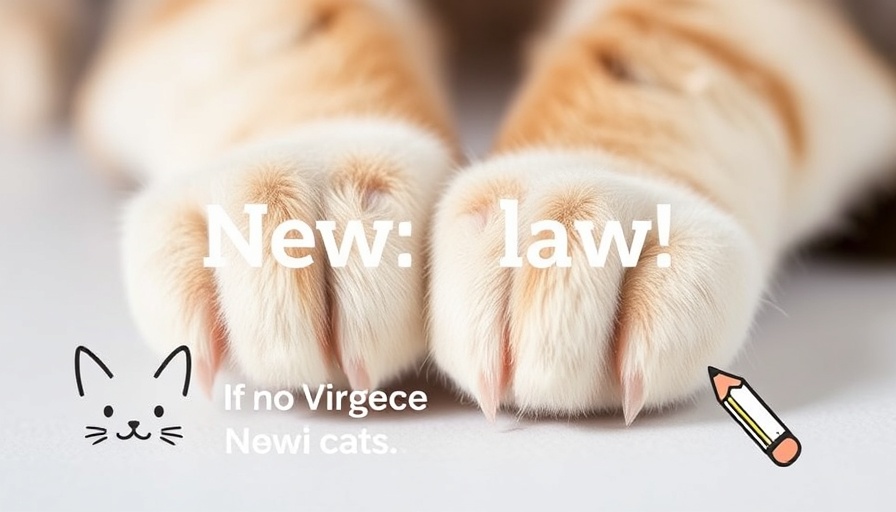
The Nutritional Power of Anchovies
When it comes to elevating your pet's diet, few ingredients pack the punch that anchovies do. Rich in omega-3 fats, vitamins, and minerals, anchovies are an excellent source of nutrients for both dogs and cats. Particularly notable is their high level of eicosapentaenoic acid (EPA), which supports heart health and can help reduce inflammation that may affect pets suffering from joint issues. Furthermore, unlike many larger fish that can accumulate toxins over time, anchovies have short lifespans, positioning them as a safer choice for your furry friends.
How to Safely Introduce Anchovies to Their Diet
Understanding how to correctly serve anchovies to your pet is key to reaping their benefits. Fresh anchovies or those canned in water or olive oil are ideal. It’s critical to avoid salted or brined varieties, which can pose health risks due to their high sodium content. For raw anchovies, freeze them at -4°F for at least seven days to eliminate any potential parasites. This preparation ensures that your pets enjoy a safe and delightful culinary treat.
Make It a Special Treat!
Incorporating anchovies into your pet's diet doesn't have to be complicated. These small fish can be introduced as a topping for homemade meals, adding an umami kick that will leave your pet begging for more. For dog owners, consider creating DIY treats by mixing anchovies into their favorite biscuit recipe or blending them into an appealing homemade meal. For cats, flaking some fresh or canned anchovies on top of their food can entice even the pickiest eaters.
More Than Just a Meal: Healthy Treats for Pets
Many pet owners recognize the importance of keeping their pets active and healthy. Part of this involves exploring nutritious yet tasty treats that enhance overall wellness. By providing treats such as anchovies, you're not just indulging your pet's palate; you're supporting their overall health. Indeed, regular intake of omega-3 fatty acids is documented to promote healthy skin and a shiny coat, factors that are often prioritized in pet care.
Connecting with Nature and Your Pet’s Diet
The inclusion of anchovies in your pet's diet resonates with the idea of a more natural feeding approach. As awareness about pet nutrition blossoms, many owners are turning to whole, minimally processed foods. Anchovies align with this trend, echoing a connection to an aquatic environment that offers a wealth of nutrients. Consider that by feeding your pets these little fish, you are providing them with health benefits while fostering an appreciation for the diversity of their diets.
A Personal Touch: Stories from Pet Owners
Many pet owners have shared heartwarming anecdotes about discovering anchovies as a meal enhancer for their pets. Jane, a dog mom from New Jersey, recounts how the simple addition of anchovies to her dog Max's dinner transformed mealtime. 'It was amazing to see how excited he got! Not only did he clean his bowl, but I've noticed his coat became shinier and healthier.' These personal stories illustrate the joy and vitality that can come from ingredient exploration in pet nutrition.
Your Next Steps
As a pet owner, being proactive about your furry friend’s diet is an essential way to ensure their health and happiness. With the growing interest in functional pet foods, anchovies are emerging as a powerful option in the quest for balanced nutrition. Why not explore the benefits of incorporating them into your pet's meals and treats? You may just find that these small fish bring big perks to your beloved companion's life!
 Add Row
Add Row  Add
Add 




Write A Comment